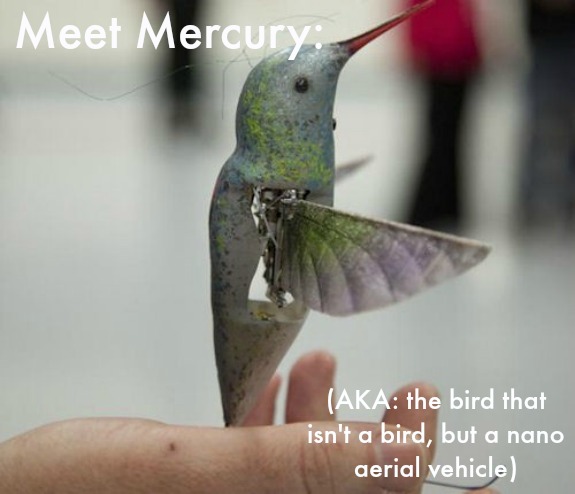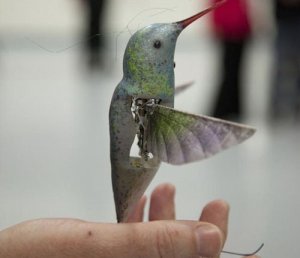

When Defense Advanced Research Projects Agency (DARPA) was asked by a company called AeroVironment to develop a small, bird-based flying machine, they were given a list of constraints. These included “no thrusters, no propellers, just flapping wings.” The results surprised even the most avid Nano Aerial Vehicles (NAV) fans; this prototype, dubbed “Mercury,” looks eerily similar to a hummingbird in flight.
“Mercury” can be controlled and operated from a distance, and has maneuverability that far exceeds that of the everyday pigeon– the faux birds can swoop, dive, glide, and hover by simply flapping their wings, something that our current fixed-wing aircraft and rotary-wing helicopters can not achieve. This makes similarly constructed designs desirable.
HOW IT WORKS:
To develop this fascinating technology they turned to nature for inspiration. As versatility and precision were key, they took particularly interest in observing the mechanisms that drive a hummingbird in flight. The team, spearheaded by engineers, built a robotic aircraft whose wings are able to change angle swiftly, and equipped it with a state-of-the-art control system that acts like the hummingbird’s tail features to help maneuver the tiny machine. Each piece was custom-built using a small microscope and Swiss watchmaker’s lathe.

Formally called the ‘Nano Hummingbird,’ (also known as the robo-hummingbird) this tiny battery-powered aircraft has a wing-span of 16 centimeters (6.5 inches) and can safely travel at speeds reaching 17 km/h (10.56 mph), whilst resisting gusts of wind of 8 km/h (4.97 mph) — all of this weighing about 19 grams (2/3 of an ounce) or less than an AA battery. It can also climb and descend vertically, fly horizontally- forward, backward left and right, as well as rotate both clockwise and counter-clockwise.
Future applications may include military surveillance, search-and-rescue missions and perhaps they may eventually have their own place in planetary exploration. The sky is literally the limit for this one.